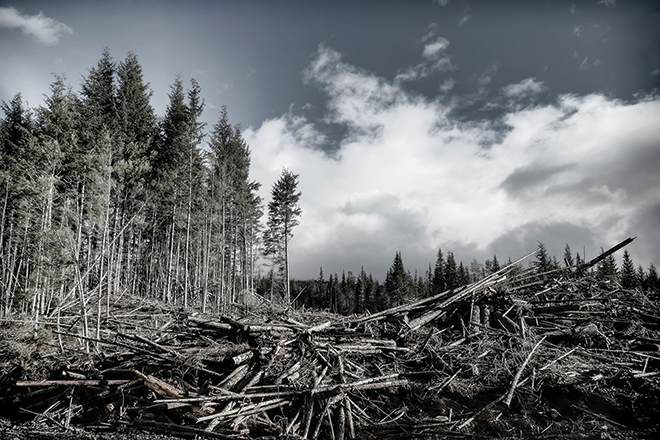By Jim Cooperman –
Despite the election of what we thought would be a more environmentally friendly government, British Columbia’s public forests continue to disappear at an alarming rate, with inadequate protection for all values including fish and wildlife habitat, community water supply protection, and recreation. Although these forests belong to the people of BC and to future generations, they are being managed primarily to benefit a few large corporations. Urgent reforms are needed to meet the needs of present and future generations, and yet to date little has been done.

The BC Liberals created the problems. The Council of Forest Industries helped them to develop the Forest and Range Practices Act (FRPA), which ended government oversight and allowed forest companies to operate carte blanche for 15 years, enabling liquidation forestry by downplaying or entirely disregarding “non-timber values.” Now the NDP, who were once the architects of the long defunct Forest Practices Code, who more than doubled the size of the park system and implemented land use planning, have done little to address the problems and reverse these destructive policies.
As a result of the professional reliance review by Mark Haddock, an oversight body was created called the Office of the Superintendent of Professional Governance in the Ministry of Attorney General with a goal to ensure best practices are implemented. As well, Bill 21 has been introduced, and when legislated it will amend FRPA to improve public input and information sharing by requiring licenses to prepare operational mapping for review and revise the wildlife definition to better protect at-risk species. More changes are in the works, but it is unlikely that the NDP will reduce the unsustainable rate of cut, revise the forest tenure system (other than Bill 22 allowing the Minister a veto over transfers of tenures and cutting rights), or remove the caveat that protection of non-timber values must not “unduly reduce the supply of timber.”
The BC forest industry has now consolidated into five large corporations that control 60 percent of the allowable annual cut. Thanks to generous subsidies (including operating without oversight, causing property and ecological damage with the bills going to the public taxpayers, and long term, give-away licenses to control vast swaths of public land to log publicly owned forests) these companies are taking their profits and investing them in US and Swedish mills, which will operate long after BC’s accessible forests are cut over because these mills cut fast-growing, southern pine. So far, BC forest companies have purchased 51 mills in the US and 9 mills in Sweden, which is more than they own in this province.
The forest industry has far more influence over policies and laws than it deserves, given that its contribution to the province’s GDP has been decreasing along with the number of jobs it provides. Forestry only represents 5 percent of the total BC economy (GDP) and only 3 percent of the direct jobs. So far, 33 mills have closed permanently or temporarily as wood supply runs out.
Massive amounts of forest land (3 million hectares economic and over 8-million non-economic) are denuded and there is no money to replant them. The government and companies can barely keep up with the costs of planting the areas that have been logged or burned recently, annual wildfire suppression costs, and disaster relief to communities for floods and drought. BC forests stopped being a carbon sink in 2001 and now add far more carbon to the atmosphere than any other source every year.
The liquidation is moving into the high elevation forests, some previously considered inoperable, which is upsetting the hydrologic balance and resulting in massive flooding that is destroying property, including the city of Grand Forks and Okanagan Lake communities. Loss of high elevation forest impacts local climates by removing the cool moist air that normally flows from damp forests down in the evening to cool off the lower hills and lakes. Loss of the evening cooling breezes further warms the valleys and increases the
likelihood of wildfires.
Land use planning, which produced so many benefits, was shelved by the Liberals and now is barely getting any attention by the NDP.
BC Timber Sales (BCTS) has approximately 20 percent of the cut and is irresponsibly logging in community watersheds, which damages water quality and quantity and poses erosion risks.
The final forest liquidation is laying waste to essential fish and wildlife habitat, especially the endangered species like caribou, owls, and salmon, and eliminating the final remnants of coastal old growth forests on Vancouver Island. Critical habitat for the mountain caribou adjacent to Wells Gray Provincial Park has been clear-cut and more logging has been approved.
The NDP promised to bring in endangered species legislation and although the bill has been drafted, it has been delayed with no implementation in sight. We are now witnessing the final liquidation of the province’s once massive tracts of forests and opposition is futile.
Jim Cooperman was a provincial forest activist with the BC Environmental Network during the turbulent 1990s. He now focuses on local issues in the Shuswap, where he has lived on a rural property for 50 years. His bioregional book, Everything Shuswap, is a local bestseller.

